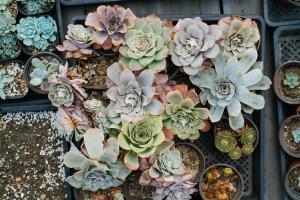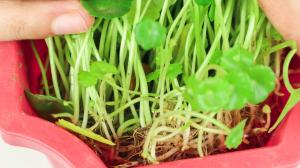How to Prep Water for Planted Aquarium
A planted aquarium can bring a mesmerizing beauty to your room, and provide a healthy environment for your aquatic pets. However, before you start setting up your planted aquarium, it's crucial to prep the water, as it directly affects the health and well-being of the aquatic plants and animals in the tank. In this article, we will guide you through the process of prepping water for a planted aquarium.
Step 1: Understanding the Water Source
Before adding water to your planted aquarium, it's essential to know the quality of your water source. Tap water usually contains chlorine, chloramines, and other chemicals that can harm your aquatic pets. Therefore, it's recommended to test your water source for pH, hardness, and other parameters. If your water contains chlorine or chloramines, it's essential to dechlorinate the water using a water conditioner.
Step 2: Adjusting the pH and Hardness
The pH and hardness of water significantly influence the growth of aquatic plants and the health of aquatic pets. Most freshwater planted aquariums require a pH range between 6.5 to 7.5 and a hardness range between 3 to 8 dKH. If your water source doesn't meet these parameters, you can use pH buffers and water softeners to adjust them. However, it's recommended to do it gradually, as sudden changes in pH and hardness can shock the aquatic life in the tank.
Step 3: Preparing the Substrate
The substrate is a crucial element in a planted aquarium, as it serves as a foundation for the plants to grow and provides a habitat for beneficial bacteria. Before adding water to your aquarium, it's recommended to prepare the substrate by rinsing it thoroughly to remove any debris and dust. You can use specialized substrates specifically designed for planted aquariums, such as gravel, sand, or plant-specific substrates.
Step 4: Adding Plants
Once you have prepped the water and the substrate, you can add your plants to your aquarium. It's essential to choose the right plants that can thrive in your aquarium's environment, such as the lighting conditions and the water parameters. You can use a variety of plants, such as stem plants, mosses, and carpet plants, to create a diverse and visually appealing aquatic garden. Make sure to plant the plants firmly in the substrate and provide them with adequate lighting and nutrients.
Step 5: Cycling the Aquarium
After adding the plants, it's crucial to cycle the aquarium to establish a healthy biological balance. Cycling refers to the natural process of establishing beneficial bacteria in the aquarium that help break down the waste products produced by the aquatic pets. It's recommended to cycle the aquarium for at least 2 to 6 weeks before adding any aquarium pets. You can use cycling products or add ammonia to the tank to stimulate the growth of beneficial bacteria.
Step 6: Adding Aquarium Pets
Finally, after cycling the aquarium, you can add your aquatic pets to your planted aquarium. It's essential to choose the right pets that can coexist with your plants and thrive in your aquarium's environment. Some popular aquatic pets for planted aquariums include guppies, tetras, shrimps, and snails. Make sure to acclimate the pets to the aquarium's environment slowly, and monitor their behavior and health regularly.
Conclusion
Prepping water for a planted aquarium is a crucial step that can significantly influence the health and well-being of your aquatic pets and plants. By following the above steps, you can create a beautiful and healthy aquatic garden that can thrive for years to come.

 how many times do yo...
how many times do yo... how many planted tre...
how many planted tre... how many pine trees ...
how many pine trees ... how many pecan trees...
how many pecan trees... how many plants comp...
how many plants comp... how many plants can ...
how many plants can ... how many plants and ...
how many plants and ... how many pepper plan...
how many pepper plan...































